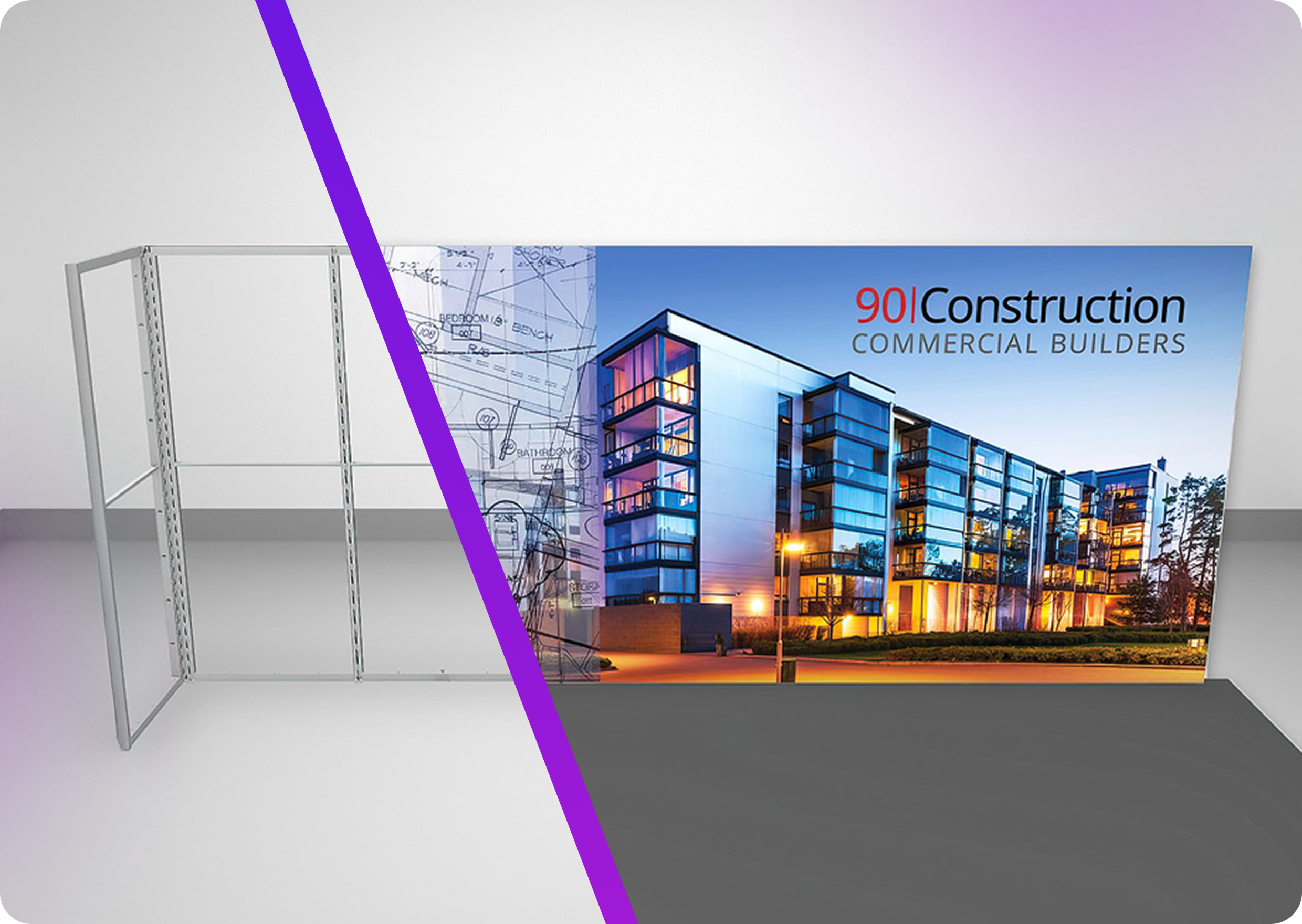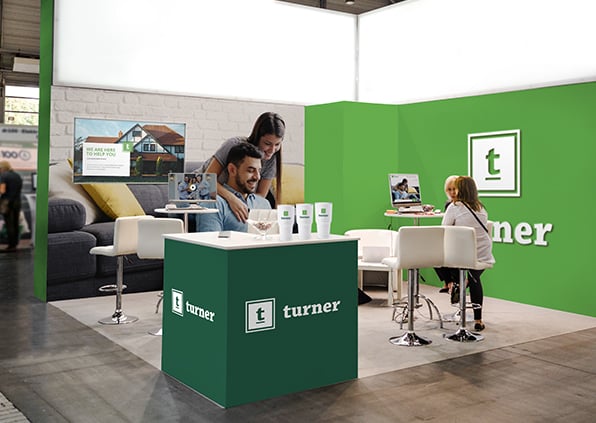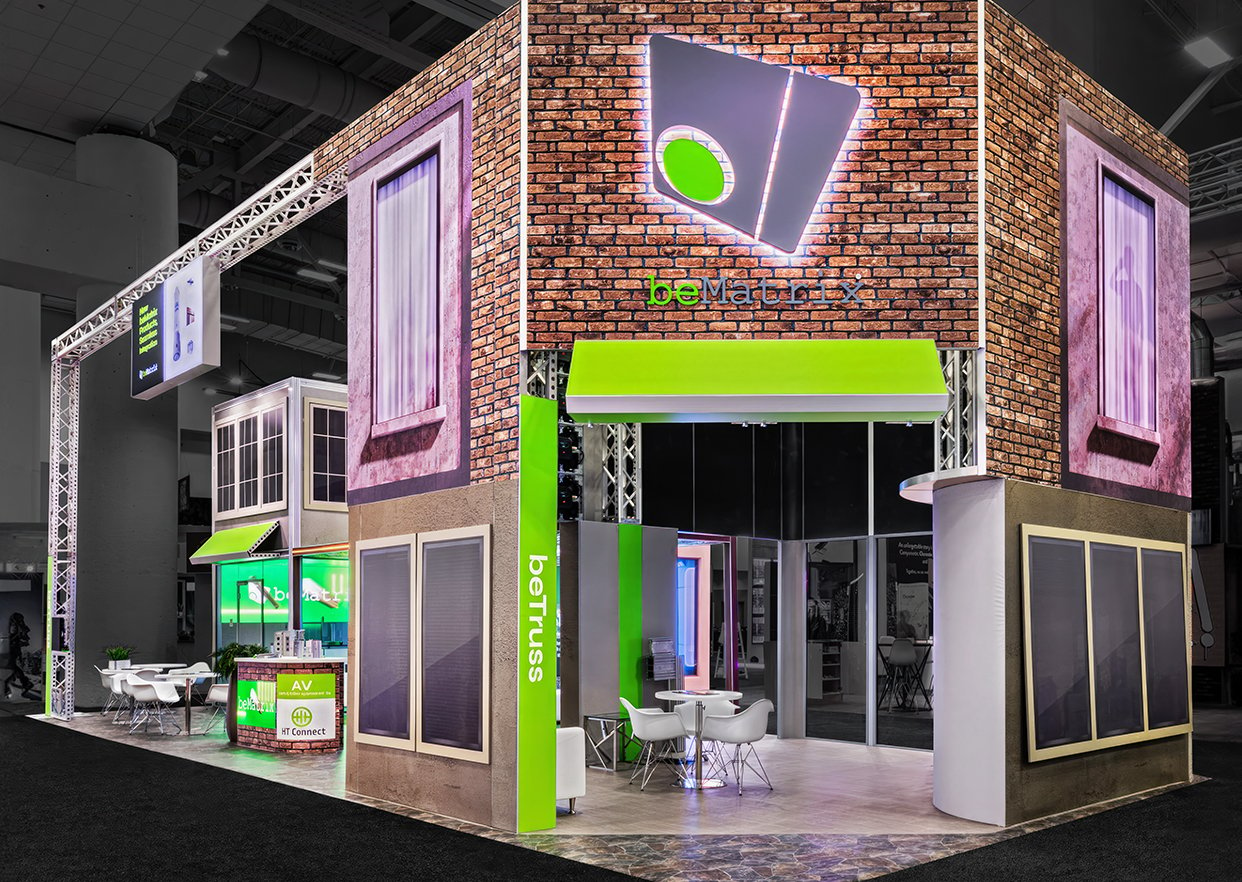Numbers don’t lie. The U.S. trade show and event marketing industry has finally recovered from the darkest days of the COVID-19 pandemic when nearly all exhibitions were cancelled. According to the International Association of Exhibitions and Events® (IAEE):
- The U.S. B2B trade show market was estimated at $15.8 billion in 2024, surpassing pre-pandemic levels for the first time.
- Roughly 37% of events in 2024 exceeded their pre-pandemic performance, a significant improvement from prior years.
%20Trade%20Show%20and%20Event%20Logistics%20Explained/Blog%20Stat%201%20%E2%80%93%20EAM.png?width=1440&height=600&name=Blog%20Stat%201%20%E2%80%93%20EAM.png)
Trade show attendance is rising, exhibitors are spending more on trade show displays and services, and the entire sector is poised for continued growth. With that growth comes a lot of hard work as exhibitors tackle the many challenges of trade show logistics. From developing new trade show booth displays and refreshing old trade show exhibits to the countless event logistics management tasks that come with trade show shipping, setup, teardown and more, event asset management systems are critical to the exhibitor.
This blog will explore the topic of trade show and event logistics, focusing on four questions in particular:
- What is a trade show event and what is it intended to accomplish?
- What are some best practices when creating trade show booth displays for your company?
- What is event asset management (EAM) logistics all about?
- What are the benefits of event asset management (EAM) to the exhibitor?
What is a trade show event?
A trade show is a large-scale event where companies from a specific industry gather to exhibit their products or services. These events are typically attended by industry professionals, buyers, media and sometimes the general public. The primary goals of participating in a trade show can generally be summarized as follows:
- Brand Visibility: Exhibitors aim to increase awareness and recognition of their brand.
- Lead Generation: Trade shows are fertile ground for collecting qualified leads.
- Networking: Trade show events provide opportunities to connect with partners, suppliers and customers.
- Product Launches: Many companies use trade shows to unveil new products or services.
- Market Research: Exhibitors and attendees alike gain insights into industry trends and competitor strategies.
%20Trade%20Show%20and%20Event%20Logistics%20Explained/Blog%20Image%201%20%E2%80%93%20EAM.png?width=1440&height=700&name=Blog%20Image%201%20%E2%80%93%20EAM.png)
While the objectives are clear, achieving them requires meticulous planning and execution — especially when it comes to managing the physical assets that represent your brand.
What are some best practices for trade show displays?
The visual and physical elements of trade show booth displays — signage, fixtures, furniture, lighting and interactive components — are critical to attracting attention and building your brand. Here are some trade show display best practices to ensure your trade show exhibits work effectively.
Design your trade show displays for maximum functionality.
- Use consistent colors, logos and messaging across all trade show exhibit materials.
- Ensure your value proposition is immediately visible and easy to understand.
- Opt for modular or portable trade show displays that can be reconfigured for different booth sizes and layouts.
- Make sure your trade show booth display is easy to navigate and ADA-compliant.
Remember that your trade show displays are a direct reflection of your brand.
- Invest in durable materials that can withstand the wear and tear of multiple events and still project a positive brand image.
- Assemble and test trade show exhibits before shipping to avoid surprises on-site.
- Regularly inspect and maintain trade show assets to keep them in top condition.
Pay close attention to trade show logistics.
- Trade show transportation can be a nightmare. Label everything and use barcodes or RFID tags to track the items being shipped.
- Use custom crates or cases to prevent damage to your trade show exhibits during transit.
- Keep a detailed inventory of all assets including quantities, conditions and locations. This is especially important if your organization maintains multiple trade show booth displays for use at concurrent events.
Plan for flawless execution at the trade show event.
- Don’t put your trade show exhibit team in a tough spot. Unless you use portable trade show displays that are easy to assemble, hire professionals to set up and dismantle your booths.
- Failing to plan is planning to fail. Ensure that all trade show exhibit team members are familiar with the layout, technology and messages you want to convey.
- Always be prepared. Bring some backup trade show booth display components and extra marketing materials in case of damage or loss.
What is event asset management logistics?
Event Asset Management (EAM) refers to the strategic planning, tracking, storage, transportation and maintenance of all physical assets used in trade shows and events. These assets include:
- Booth structures and displays
- Signage and graphics
- Marketing collateral
- Promotional marketing materials
- Furniture and fixtures
- Technology (e.g., screens, tablets, lighting)
EAM is a specialized trade show logistics discipline that ensures these assets are available, functional and aligned with brand standards at every event. It involves several key components:
Centralized Asset Tracking
Using specialized software platforms or enterprise asset management systems, companies can track the location, condition and usage history of each item. This prevents loss, duplication and last-minute surprises — such as showing up at an event in New York only to discover that your trade show booth display is still in Los Angeles.
Inventory Control
Event asset management logistics systems help manage stock levels of consumables (e.g., brochures, giveaways) and ensure replenishment before each event. They also track which assets are in storage, in transit or in use.
Logistics Coordination
EAM includes scheduling shipments, coordinating trade show shipping with carriers, and ensuring timely delivery to event venues. It also involves managing customs documentation for international events.
Storage and Warehousing
Assets are often stored in centralized warehouses between events. Event asset management systems ensure proper storage conditions, organize items for easy retrieval, and schedule maintenance or refurbishment as needed.
Lifecycle Management
All assets have a lifecycle — from acquisition to retirement. Event asset management systems track usage patterns, wear and tear, and marketing ROI to determine when items should be repaired, replaced or retired.
Integration with Event Planning
Event asset management systems often integrate with event planning tools to align asset availability with event schedules. This ensures that the right assets are deployed to the right events at the right time.
In essence, event asset management is the backbone of trade show logistics. Without it, even the most creative booth designs can (quite literally) fall apart due to missing components or logistical delays.
%20Trade%20Show%20and%20Event%20Logistics%20Explained/Blog%20Image%202%20%E2%80%93%20EAM.png?width=1440&height=700&name=Blog%20Image%202%20%E2%80%93%20EAM.png)
What are the benefits of event asset management (EAM)?
The benefits of event asset management (EAM) services are numerous, both operationally and financially. Here are the many ways trade show exhibitors benefit from centralized asset and event management for trade shows.
Event asset management systems reduce trade show marketing costs.
- Unnecessary purchases are avoided through the reuse and repurposing of existing trade show booth displays.
- Consolidated trade show shipping strategies reduce ongoing trade show transportation costs.
- Proper packaging and handling reduces trade show exhibit repair and replacement costs.
Effective event logistics create operational efficiencies.
- Pre-labeled and organized trade show exhibit assets streamline installation at the exhibit hall.
- Accurate tracking ensures that all trade show booth components needed are included in a shipment.
- Real-time data helps you plan future trade shows and events more effectively.
Event asset management systems protect your brand.
- Standardization of assets ensures that your trade show exhibit will reflect the same brand identity at all events.
- Controlled, centralized brand messaging prevents outdated or incorrect materials from being used.
- Well-maintained trade show booth displays enhance brand credibility among attendees at the show.
Event asset management systems allow you to scale up or down.
- The EAM methodology makes it possible — and easy — to manage assets across concurrent trade shows or roadshows.
- With EAM, you can quickly respond to changes in booth size, layout or theme for each event.
- As your trade show and event portfolio grows, event asset management logistics systems scale with you.
Data-driven insights are a key benefit of event asset management (EAM).
- Usage analytics enable you to understand which assets are most effective.
- Lifecycle tracking allows you to make informed decisions about asset retirement or upgrades.
- ROI measurements link trade show exhibit performance to event outcomes like lead generation or sales.
Ultimately, event asset management systems transform trade show participation from a logistical headache for the exhibitor into a source of strategic advantage for their business. EAM empowers marketing teams to focus on engagement and storytelling — confident that the all-important trade show logistics are under control.
Taylor: Event Asset Management Solutions for Trade Shows
Exhibitors across the nation depend on Taylor for their custom event and trade show displays, booths and signage. In addition to fully custom trade show exhibit designs, we are known for innovative modular trade show systems that allow you to create multiple booth sizes and layouts from the same “kit of parts.” Likewise, we offer space-saving, travel-friendly portable trade show displays that make a big visual impact at a lower price point.
Beyond the trade show booth displays themselves, we also support our customers with comprehensive Event and Asset Management (EAM) services like those described above. A stress-free, one-stop shop for seamless event planning, Taylor’s Event and Asset Management system combines everything you need in one partner:
Trade Show Booth Display Design & Production
Taylor produces your trade show displays, banners, printed assets and promo items and then handles all ongoing logistical details.
Warehousing & Fulfillment
Taylor stores your displays, printed materials and promo items and consolidates trade show shipping, ensuring your assets arrive at the event on time and damage-free.
Real-Time Asset Tracking
TrackIt™, our GPS tracking system, provides real-time trade show transportation tracking to prevent lost shipments, reduce delays and give you visibility into asset commitments.
Show Coordination
Upon request, we can coordinate key aspects of each event — trade show booth setup and teardown, furniture and carpet rental, electrical and audio services, and more — including management of any third-party labor required.
Receive & Inspect Process
After each show, the Taylor team inspects and photographs all booth components, notifies you of any damage, and makes repairs as requested — before anything is returned to our warehouse.
Event Performance ROI Reporting
Real-time analytics and reporting let you assess event performance and ROI, facilitating data-driven decisions regarding future events.
Trade Show ERP Software
Taylor uses ExhibitForce, the industry’s premier ERP platform, to put you in control of your trade
show event planning from start to finish.
Looking for a better way to manage your trade show booth displays? Tired of trade show and event logistics taking up so much of your time? Contact Taylor to learn about our Event and Asset Management (EAM) services.
%20Trade%20Show%20and%20Event%20Logistics%20Explained/Blog%20Hero%20%E2%80%93%20EAM.png?width=1200&height=600&name=Blog%20Hero%20%E2%80%93%20EAM.png)






